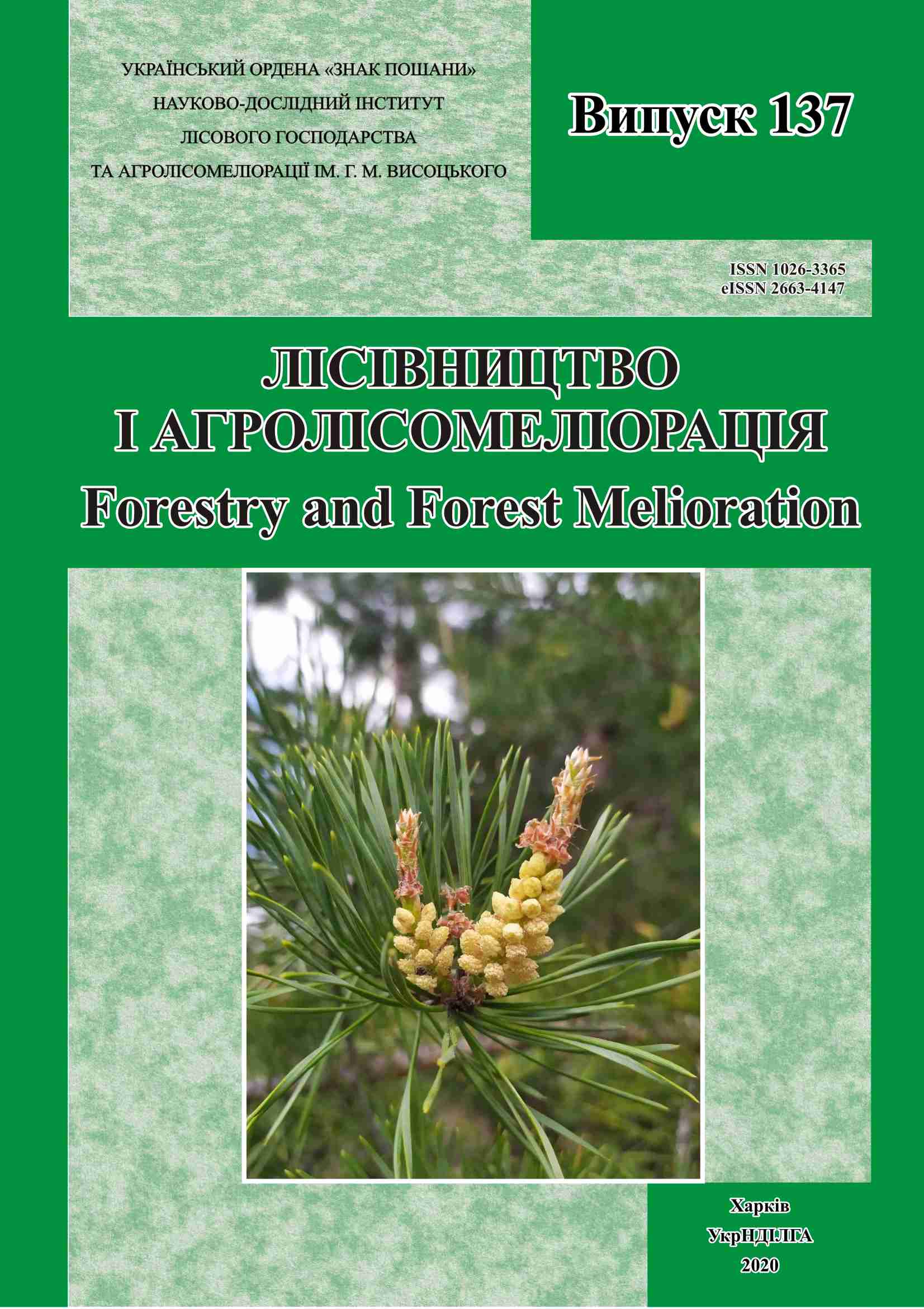Abstract
Introduction
Ukrainian forestry enterprises established more than 40 thousand hectares of forests on reclaimed lands. Growth of forest planted on reclaimed lands has the specificities resulting from agrochemical and water-physical properties of dumping soil mixes, types and forms of man-made relief of quarries and a number of biotic, abiotic and anthropogenic factors.
The aim of the study was to evaluate the growth, development, and structure of forests planted on reclaimed lands after lignite coal extraction in Ukrainian Forest-Steppe.
Materials and Methods
The analysis of forest conditions, species composition, origin, age structure, growth and development of forest stands on the reclaimed lands of the former Yurkivsky coal strip mine near Vatutine in Cherkassy Region was carried out based on materials from the data bases of Ukrderzhlisproekt Production Association. To study the forest typological characteristics of the stands, the analysis of forest management data on reclaimed lands in the Kozachanske Forestry of Zvenigorod State Forest Enterprise was carried out for the period from 2000 to 2017. We determined forestry characteristics of the stands by their distribution by area in tabular databases in Excel. Each stand was assessed by its forest category, forest-forming species, origin, density, ecotope, forest site type, age group, and quality class. To work out a comprehensive description of the stands, we used the research results obtained in previous years, as well as cartographic materials and publications.
Results
According to the databases, a total area of the recreational forests on reclaimed lands managed by Kozachanske Forestry is 631.3 hectares. The area of planted forests makes 579.4 ha or 91.6% of the total forest area. The green zone forests occupy 56.3%, and the parkland covers 43.7% of the total forest area.
The wooded area of the green zone was formed with a participation of 16 forest-forming species. The main species used to reforest dumps and quarries are Pinus sylvestris L. (47.3%), Robinia pseudoacacia L. (21.7%), Quercus robur L. (11.6%), Acer negundo L. (7.2%), Betula pendula Roth.(4.3%), and Pinus pallasiana D. Don (3.3%). Together, they cover 95.4% of the forests. The part of other species is less than 1.0 %; in total they occupy 4.6%. Apart from those species, there are also Ulmus carpinifolia Rupp ex G., Larix decidua Mill., Picea abies (L.) Karst., Populus nigra L., Fraxinus lanceolata Borkh., Pinus banksiana Lamb., Acer campestre L., and Rhus coriaria L.
According to the databases of 2000 and 2017, stands with medium density of stocking prevailed in the reclaimed lands. Their proportion made 58.8 % and 62.0 %, respectively.
In early 2018, fresh hygrotopes made up 97 % of the total wooded area of the green zone in Vatutine. By fertility of forest sites, relatively infertile forest site type covered 3.2%, relatively fertile site type – 82.7% and fertile site type – 15.2%.
From 2000 to 2017 the total average estimated growth class decreased by one class – from Ia,6 to I,6. However, the proportion of the most common growth classes, namely Ia, I and II, increased over time from 71.7% in 2000 to 77.0% in 2006, 81.4% in 2010, and 90.1% in 2017. It indicates an improvement of forest site conditions of soil mixtures in the quarry-dump complex as a result of reclamative effect of the stands.
Conclusions
Planted Scots pine, black locust, and pedunculate oak stands predominate in reclaimed lands in the green zone in Vatutine, making 47.3%, 21.7%, and 11.6% of total forest area, respectively. From 2000 to 2017, the area of the black locust stands increased by 2.5 % and ash maple by 5.7%. At the same time, the area of Scots pine stands decreased by 7.8%. On soil mixtures with loess-like loams, relatively infertile, relatively fertile and fertile forest site types can emerge. Fresh hygrotopes occupy more than 97% of the forest area, which corresponds to the forest typological classification in Ukraine.
2 Figs., 10 Tables, 16 Refs.
Key words: forest reclamation, dumps, quarries, forest stands, Scots pine, forest site conditions, mensuration characteristics.

This work is licensed under a Creative Commons Attribution 4.0 International License.
